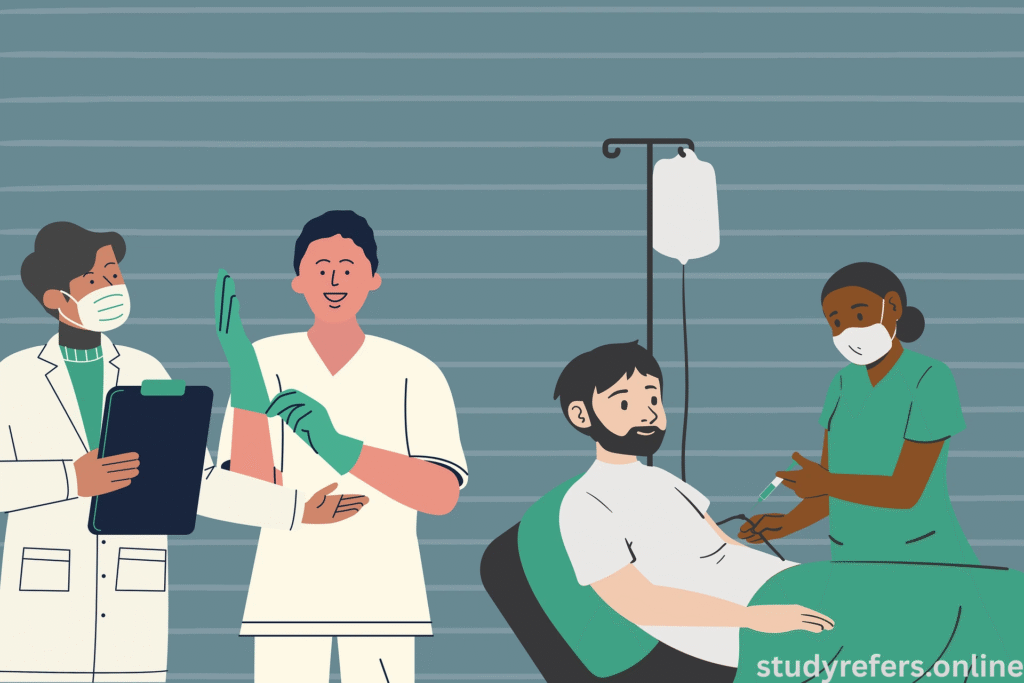Introduction to Emergency Medical Technology Courses
An emergency medical technology program is a stepping-stone to a fulfilling career in emergency medical services (EMS), preparing individuals to save lives during medical emergencies. Such programs prepare prospective Emergency Medical Technicians (EMTs) and paramedics for responding to medical emergencies ranging from heart attacks to accident scenes. With the demand for trained EMS professionals on the rise worldwide due to aging populations and rising healthcare demands, such programs are more important today than ever before. This June 19, 2025, blog post, guided by the keyword “emergency medical technology course,” covers course information, career prospects, and trends in the field, presenting an all-around guide for potential students.

What Is an Emergency Medical Technology Course?
An EMT emergency medical technology program offers hands-on training in pre-hospital treatment, enabling students to examine, stabilize, and transport patients in emergency situations. Courses vary from general EMT certification to advanced paramedicine training, including skills such as CPR, wound care, and use of defibrillators. The U.S. Bureau of Labor Statistics (BLS) states that EMTs and paramedics play an important role in healthcare, attending more than 20 million emergency calls within the U.S. per year.
Instruction is provided by community colleges, technical schools, and EMS schools, merging classroom with clinical and field experience. X users frequently post success stories, with one stating, “My EMT course was tough but life-changing!” This testifies to the life-changing effect of these courses on students and communities alike.
Why Take an Emergency Medical Technology Course?
1. High Demand for EMS Professionals
The BLS also forecasts 5% job growth for paramedics and EMTs between 2022 and 2032, surpassing the average. Demands are fueled by aging populations and urban expansion, providing job stability.
2. Significant Contribution
EMTs rescue lives on a daily basis, delivering life-saving care during high-stress situations. Students enjoy feeling that they make a real difference, as noted in X posts regarding “the adrenaline and satisfaction of EMS work.”
3. Affordable Entry Point
EMT training needs only a high school diploma and is completed in 3–6 months, which makes it suitable for career changers or new professionals. Paramedic training, though longer, provides more advanced opportunities.
4. Career Advancement
An EMT certification can be a stepping stone to becoming a paramedic, flight medic, or emergency room technician. EMS is often used by many as a stepping stone to medical or nursing school.
Types of Emergency Medical Technology Courses
1. EMT-Basic (EMT-B)
-
Duration: 120–150 hours (3–6 months)
-
Skills: Basic life support (BLS), CPR, bleeding control, and patient assessment
-
Certification: National Registry of Emergency Medical Technicians (NREMT) exam
-
Cost: $1,000–$2,000 (program-dependent)
-
Ideal For: Entry-level EMS positions
2. Advanced EMT (AEMT)
-
Duration: 200–400 hours
-
Skills: IV therapy, advanced airway management, and medication administration
-
Certification: NREMT AEMT exam
-
Cost: $2,000–$4,000
-
Ideal For: Those interested in intermediate positions
3. Paramedic
-
Duration: 1,200–1,800 hours (1–2 years)
-
Skills: Advanced cardiac life support (ACLS), trauma care, and pharmacology
-
Certification: NREMT Paramedic exam
-
Cost: $5,000–$15,000
-
Ideal For: EMS leadership positions
4. Specialized Courses
-
Examples: Wilderness EMT, Tactical EMS, or Flight Paramedic
-
Focus: Unique skills for unique settings
-
Prerequisites: EMT or paramedic certification
-
Ideal For: Experienced professionals who want to specialize
What to Expect in an Emergency Medical Technology Course
1. Classroom Learning
Students learn about anatomy, physiology, and emergency procedures. Such topics as shock management, fracture stabilization, and obstetric emergencies are covered. Lectures are frequently complimented with online modules.
2. Hands-On Training
Simulations of actual situations teach skills such as splinting, giving oxygen, and defibrillation. They practice on manikins and role-play with each other.
3. Clinical Experience
The majority of programs have 10–50 hours in hospitals and ambulances, where the students work and assist under supervision. This is confidence and practical skill-building.
4. Certification Exams
Following course work, students sit for NREMT exams, including written and practical sections. Passing rates register an average of 70%, according to NREMT statistics, and with preparation being paramount.
5. Physical and Emotional Requirements
Training programs equip students with the challenges of EMS, such as lifting patients and stress management. X users highlight the importance of “resilience and teamwork” in training.
Skills Acquired in an Emergency Medical Technology Program
-
Medical Knowledge: Trauma, cardiac, and respiratory emergencies
-
Technical Skills: Application of AEDs, medication administration, and intubation
-
Critical Thinking: Evaluating patients under stress
-
Communication: Communication with dispatchers, nurses, and families
-
Compassion: Emotional support for patients
These finely-tuned skills, developed through intensive training, render EMTs and paramedics invaluable, as cited by one source in their “life-saving expertise.”
Career Prospects Following an Emergency Medical Technology Program
1. Emergency Medical Technician (EMT)
-
Salary: $35,000–$50,000 (BLS, 2023)
-
Roles: Ambulance personnel, fire stations, event medic teams
-
Outlook: Strong demand in city and rural communities
2. Paramedic
-
Salary: $45,000–$70,000
-
Roles: Command EMS teams, critical care transport
-
Outlook: Hospital and air ambulance opportunities
3. Specialized EMS Positions
-
Examples: Flight medic ($80,000+), wilderness EMT
-
Requirements: Advanced certifications and experience
-
Outlook: Niche but growing fields
4. Healthcare Pathways
-
Roles: ER technician, nurse, physician assistant
-
Path: EMT experience strengthens medical school applications
-
Outlook: Strong crossover potential
X users frequently post career changes, with one writing, “My EMT course led me to nursing school—best decision ever!”
How to Choose the Right Emergency Medical Technology Course
1. Accreditation
Ensure the program is accredited by the Commission on Accreditation of Allied Health Education Programs (CAAHEP) or approved by your state’s EMS office.
2. Course Format
Select in-person, hybrid, or accelerated courses. Hybrid courses, which combine online and hands-on learning, are favored, according to X discussions.
3. Cost and Financial Aid
Compare fees and consider scholarships, such as those offered by the National Association of EMTs. Community colleges typically provide affordable opportunities.
4. Location and Facilities
Choose programs that have access to newer equipment and clinical affiliations. Urban programs can provide more hospital affiliations.
5. Reputation and Outcomes
Check pass rates for NREMT exams and success in finding jobs. Alumni feedback on sites such as Reddit can give insights.
Challenges in Emergency Medical Technology Courses
1. Intense Training
Courses require long hours of studying and rapid learning, difficult for those juggling work or family. Proper time management is important.
2. Emotional Stress
Simulations and clinicals place students at risk of trauma, thus the need for resilience. Stress management training is usually part of the programs.
3. Physical Demands
EMTs move heavy patients and do work in harsh environments. Conditioning for fitness, as recommended in X posts, enables the fulfillment of these demands.
4. Certification Hurdles
NREMT exams are challenging, with some students taking more than one attempt. Preparation classes and study groups enhance passing rates.
Future Trends in Emergency Medical Technology Education
1. Simulation Technology
VR and AR facilitate training, modeling complicated emergencies. A 2025 EMS World feature mentions VR’s contribution towards “realistic EMS scenarios.”
2. Integrating Telemedicine
Telemedicine competencies, such as distant patient monitoring, are being integrated into courses to keep pace with EMS advancements.
3. Diversity and Inclusion
Programs seek to diversify EMS, offering scholarships for underrepresented groups, according to NAEMT initiatives.
4. Global Standards
Global EMS certifications are gaining popularity, allowing cross-border careers, as talked about on X.
Where to Find Emergency Medical Technology Courses
-
Community Colleges: Low-cost programs with clinical affiliations
-
EMS Academies: Program-specific training, such as American Red Cross
-
Online Directories: EMS.gov or CAAHEP.org provide lists of accredited programs
-
Job Boards: Indeed and LinkedIn frequently post course providers
Conclusion
An emergency medical technology program is a stepping stone to an exciting career in EMS, providing skills to save lives and potential for advancement. With high demand, meaningful work, and available training, it’s a perfect career path for someone who is interested in healthcare. As the world and needs change with technology, EMS professionals will continue to be important.
